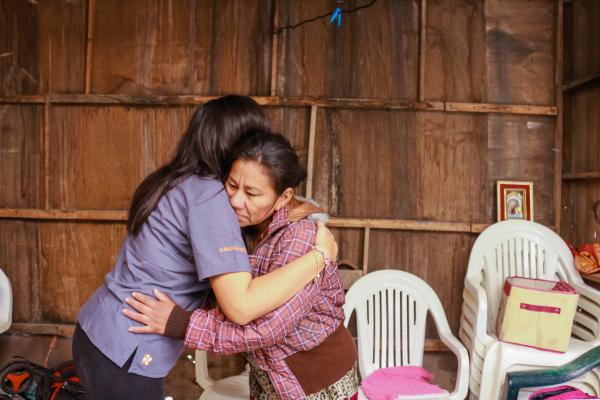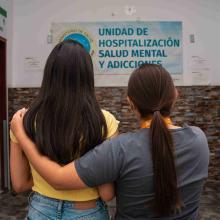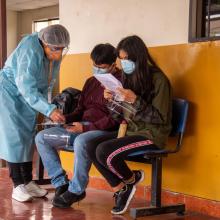Suicide is a public health problem, and the World Health Organization (WHO) has warned that more than 700,000 people die from suicide each year. An equivalent of one death every 40 seconds.
Meanwhile, in Peru, according to the report of the Situational Room of Prioritized Mental Health Problems of the Ministry of Health (MINSA), 1,620 cumulative suicide attempts have been recorded up to August 2024.
These data reflect a worrying trend that is aggravated in vulnerable populations such as those prioritized by Socios En Salud (SES). In the latest figures collected by our health programs, an alarming situation is revealed in these communities.
The Mental Health Program of SES points out that 10% of people affected by tuberculosis (TB), HIV, among others who belong to marginalized communities, present a risk of suicide.

Las mujeres transgénero presentan un riesgo suicida de 17%, según cifras recabadas por Socios En Salud, al enfrentar altos niveles de violencia, exclusión y acceso limitad a servicios de salud.
Breakdown of figures by group
Out of a total of 29,325 people monitored through Socios En Salud’s health programs, which include people affected by TB, their contacts, people living with HIV and key populations such as men who have sex with men, transgender women and sex workers, 10% present suicidal risk.
The analysis breaks this figure down by population group, which allows for a more precise identification of the most affected communities. Thus, it is known that people living with HIV are, of all groups, those facing the highest suicide risk, with a worrying 19%.
This figure is almost double the average and reflects how stigma, discrimination and the physical and emotional burden of living with this disease severely impact mental health. In second place, transgender women have a 17% risk, a group that also faces high levels of violence, exclusion and limited access to adequate health services.
For their part, people affected by COVID-19, another group included in the analysis, show a 13% suicide risk. The pandemic has exacerbated mental health problems worldwide, which is reflected in these figures.
Finally, people affected by TB register an 11% suicide risk, highlighting the complexity of this disease not only from a physical, but also from a psychological and social point of view.
People living with HIV are, of all groups, facing the highest suicide risk.
Support, essential in suicide prevention
In the face of these alarming figures, it is crucial that the health system address the link between infectious diseases and mental health in a comprehensive manner. The integration of mental health services within programs for tuberculosis, HIV and other infectious conditions is critical to reducing suicidal risk.
Social intervention and support are also key to preventing suicide in these vulnerable populations. According to María Fernanda Amézquita, psychologist with the Mental Health Program at Socios En Salud, it is vital to offer close accompaniment to people at risk.
“This is a person in a situation of vulnerability, who overrides his or her survival instinct and is capable of making life-threatening decisions. We, as part of the community, must provide accompaniment so that the person knows that they have allies who offer their support, company or support, in search of professional help,” he says.
And the fact is that suicide prevention does not depend solely on medical or psychological treatment, but also on the person’s social environment. The community has an active role in providing support, emotional validation and a sense of belonging to those at risk.
Empathy, accompaniment and the creation of support networks can be decisive in saving lives and offering a path to recovery.
If you would like to receive more information about our activities, you can subscribe here. Join our movement for health!



